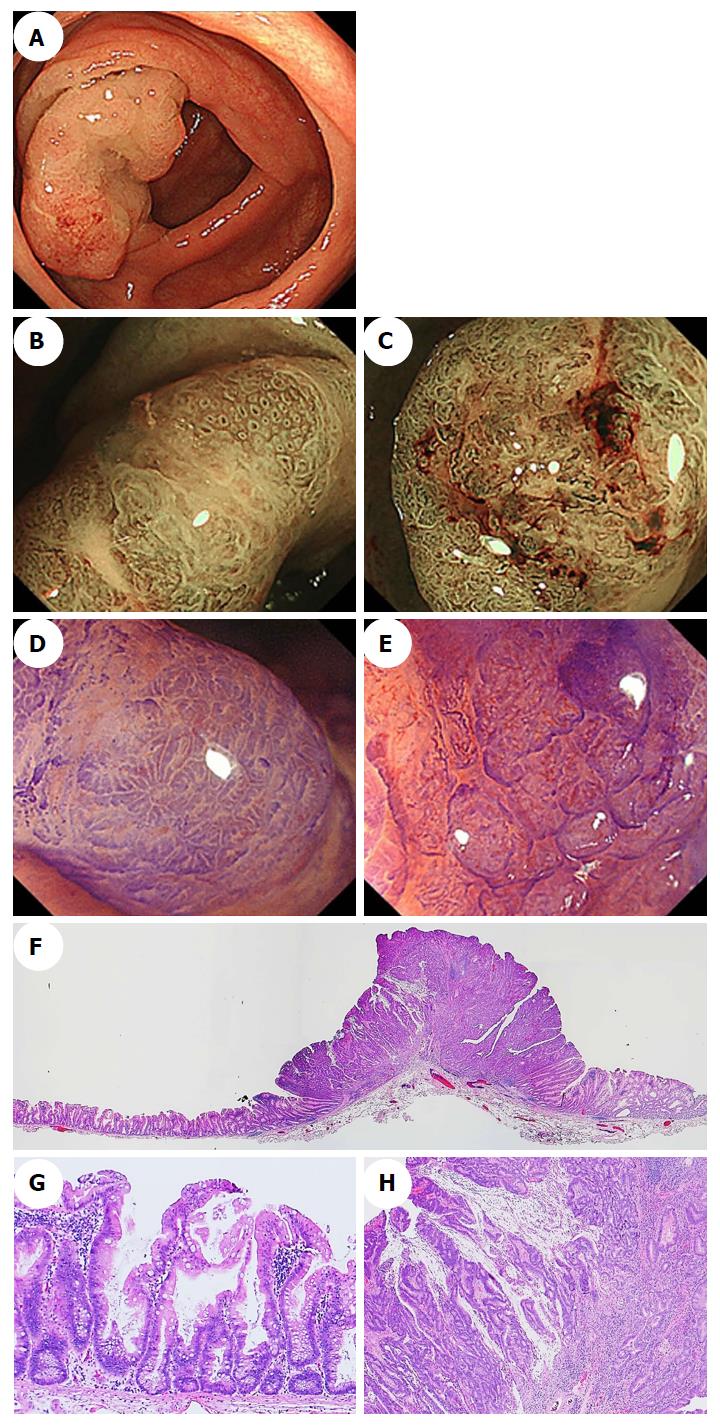Copyright
©The Author(s) 2018.
World J Gastroenterol. Aug 7, 2018; 24(29): 3250-3259
Published online Aug 7, 2018. doi: 10.3748/wjg.v24.i29.3250
Published online Aug 7, 2018. doi: 10.3748/wjg.v24.i29.3250
Figure 6 Endoscopic images of a sessile serrated adenoma/polyp with an invasive carcinoma in a representative case.
A: A conventional endoscopic image captured using white-light imaging shows a red 55-mm semipedunculated lesion in the ascending colon. B and C: Magnifying narrow-band imaging revealed dark spots inside the crypts on an edge of the lesion and irregular vessel patterns over a large part of the lesion, respectively. D and E: Magnifying chromoendoscopy using crystal violet staining; D: A high-powered view of the marginal zone, the dilated openings of the crypts have a type II-open pit pattern; E: A high-powered view of the middle region in which a type VI-severe pit pattern is evident. We endoscopically diagnosed the lesion as a carcinoma associated with an SSA/P, and achieved an en bloc resection by performing an endoscopic submucosal dissection. F-H: Histopathologic findings with hematoxylin-eosin staining of the resected specimen; G: Crypts with a serrated architecture exhibiting irregularly dilated crypts and irregularly branching crypts, corresponding to SSA/P; H: Well to moderately differentiated adenocarcinomas invade the submucosa with extracellular mucin production. The lesion was pathologically consistent with an invasive submucosal adenocarcinoma associated with an SSA/P. SSA/P: Sessile serrated adenoma/polyp.
- Citation: Murakami T, Sakamoto N, Nagahara A. Endoscopic diagnosis of sessile serrated adenoma/polyp with and without dysplasia/carcinoma. World J Gastroenterol 2018; 24(29): 3250-3259
- URL: https://www.wjgnet.com/1007-9327/full/v24/i29/3250.htm
- DOI: https://dx.doi.org/10.3748/wjg.v24.i29.3250









